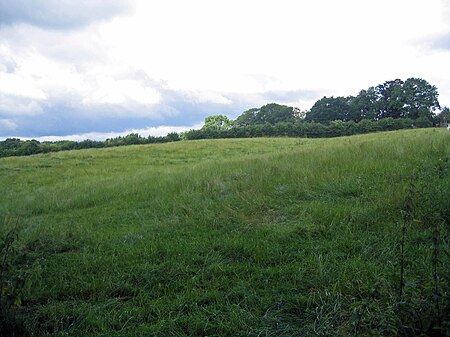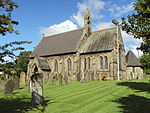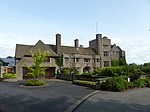Kelsborrow Castle
Buildings and structures in CheshireHill forts in CheshireScheduled monuments in Cheshire

Kelsborrow Castle is an Iron Age hill fort in Cheshire, northern England. Hill forts were fortified hill-top settlements constructed across Britain during the Iron Age. It is one of only seven hill forts in the county of Cheshire and was probably in use for only a short time. In the 19th century, a bronze palstave was recovered from the site. It is protected as a Scheduled Ancient Monument.
Excerpt from the Wikipedia article Kelsborrow Castle (License: CC BY-SA 3.0, Authors, Images).Kelsborrow Castle
Boothsdale,
Geographical coordinates (GPS) Address External links Nearby Places Show on map
Geographical coordinates (GPS)
| Latitude | Longitude |
|---|---|
| N 53.2034 ° | E -2.702097 ° |
Address
Iron Age Fort Kelsborrow Castle
Boothsdale
CW6 0NH
England, United Kingdom
Open on Google Maps










